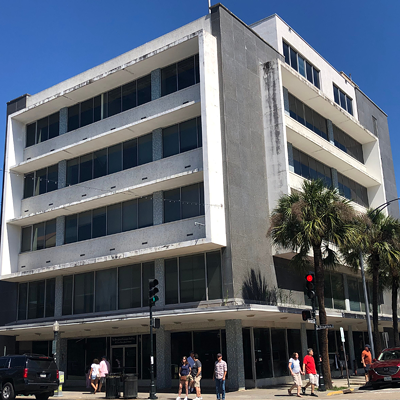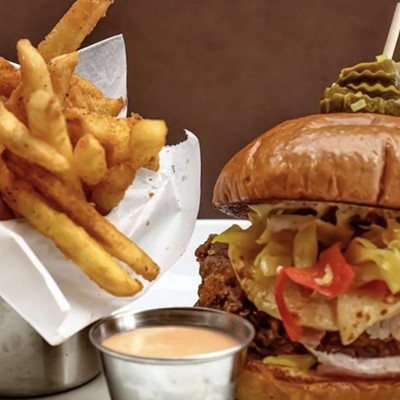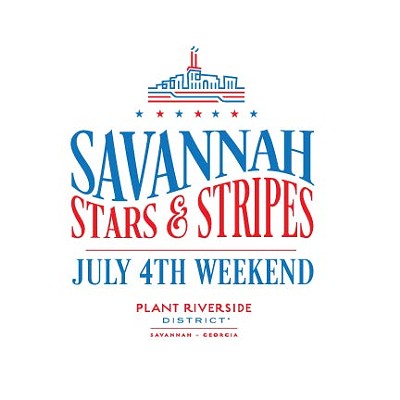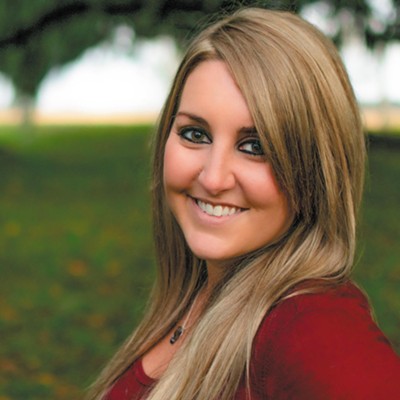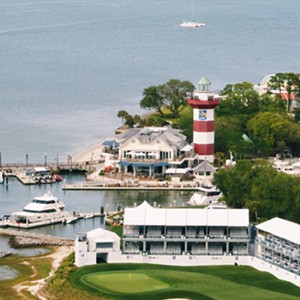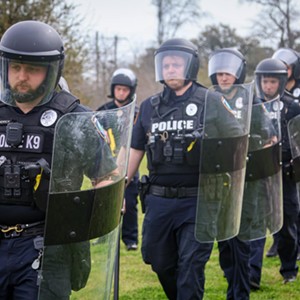‘Savannah demographically has a greater metropolitan population of about 800,000 people, and it has 13 million tourism visits. If you contrast that to Charleston, the population’s about 40,000 less and the tourism is 4 million versus 13 million, which is a really unknown fact.’ —Ben Carter
A LOT OF INTERESTING THINGS happened during developer Ben Carter's remarkable interview-gone-awry with Georgia Public Broadcasting's Emily Jones last week—including his unusual theory about Ebola and apparently an effort by Carter to physically interfere with her recording equipment when he wasn't happy with her questions.
You can draw your own conclusions. But I want to focus on the above statement by Carter from that interview, which is not only factually incorrect literally from beginning to end, but proof that statistics can show whatever result you want them to show, with far-reaching results.
First, there are several ways the U.S. Census measures the population of Savannah’s metropolitan area. None of them shows anywhere near 800,000 people.
The Savannah Metropolitan Statistical Area includes Bryan, Chatham, and Effingham Counties and was estimated at a population of 366,047 last year. The Savannah-Hinesville-Statesboro Combined Statistical Area, the largest recognized local entity, showed a population of 516,159 in the 2010 Census.
Either way, nowhere near 800,000 people.
By contrast, the Census-recognized Charleston-North Charleston-Summerville MSA was estimated at 712,220 in 2013.
That’s a lot closer to 800,000 people.
If you want to get squirrely with the numbers, you could add the Hilton Head/Bluffton/Beaufort Metropolitan Statistical Area (193,882 in 2013) to ours, for a total of 710,041 people in an area covering two states and two hours drive-time, and still not get all that close to 800,000 people.
(The actual municipalities of Savannah and Charleston are indeed very similar in population: 142,772 and 127,999 respectively in 2013.)
Of most concern, however, is the patently absurd but unfortunately very commonly-held contention that Savannah gets three times the tourists Charleston gets.
This is a persistent myth that is not only unfounded by the numbers, but clearly doesn’t pass the smell test for anyone who’s visited both cities.
The “official” tourism number for Charleston—which just won the Conde Nast reader's poll for "Best U.S. City" for the fourth year in a row—is 4.76 million for 2013, from a study by the College of Charleston.
Savannah’s official tourism number for 2013, compiled by the outside firm Longwoods International, is 13 million even (perhaps curiously rounded off).
However, the two studies arrive at those numbers in different ways.
Most significantly, the Savannah study opts to add “day-trippers” to the total, and as far as I can tell Charleston’s doesn’t. Day-trippers come into town but don’t spend the night, whether it’s to shop, visit family, or even for a doctor’s appointment.
How many “day-trippers” factor into Savannah’s 13 million annual visitors? 5.7 million.
Let’s do the math:
Subtract Savannah’s day-trippers from the total number and you get: 7.3 million overnight visitors—much closer to Charleston’s official number.
(And if you parse the numbers further you can pare that figure down, for example the finding that about 15 percent of overnight visitors are here on business.)
Another smell test: Divide 13 million by the number of weeks in a year, 52. That equates to 250,000 visitors per week—about the number of visitors during the St. Patrick’s Day celebration, when downtown streets are so crowded you can barely walk.
As bustling and full of tourists as downtown Savannah can be these days, if there really were a quarter million actual tourists there every week, it would be virtually impassable.
Add to that mental image the fact that tourists don’t spread out equally over 52 weeks but tend to cluster seasonally, and you see how unhelpful and oddly unrealistic the 13 million figure can be.
Awhile back I had a long talk about this subject with Visit Savannah President Joe Marinelli, way before the Carter interview.
I want to stress that I make no insinuation that Visit Savannah intentionally misrepresents Savannah tourism numbers.
Unfortunately, we have seen that politicians and developers in Savannah often use those numbers out of context, knowingly or unknowingly, to justify whatever it is they want to do and want us to pay for.
And that’s why it’s important to know what the numbers really tell us.
“We’re very particular about using the term ‘visitors’ rather than tourists,” Marinelli says. “Other people tend to use the word tourist, but we’re very particular about that, because the data doesn’t use the word ‘tourist’ anywhere.”
Marinelli’s own comparison of the two markets is frank.
“Our Broughton Street/River Street doesn’t have the level of retail experience that Charleston’s King Street has. That picture may be different 12 months from now, but not yet,” Marinelli says.
“Go beyond our Historic District and we have almost no high-end restaurants anywhere else in the marketplace. There’s no real high-end shopping,” he says. “And Charleston also has several affluent suburbs. There are shops and retail experiences there we’re not going to have for 20 years.”
So while tourism in Savannah is clearly robust and increasing, our numbers of “actual” tourists are likely not just lower, but far lower than usually cited by important figures such as Ben Carter, Mayor Edna Jackson, and many other local players.
Why is this important?
If we don’t use accurate numbers, our public planning and public safety policy—and indeed our entire tax structure—could be based on false assumptions, with damaging results that could hamper growth.
For example:
• The Tax Allocation District/Community Improvement District proposed to spur development on Broughton Street could be based on completely unrealistic premises of return on investment.
• The Tourism Leadership Council’s proposed 25-cent surcharge on all purchases over $5 in the to-go cup zone, supposedly to fund “ambassadors” and increased police presence, may not be soundly conceived.
• Ditto for the “feasibility study” recommending a brand-new taxpayer-funded ballpark in the tourist district to replace Grayson Stadium.
And in a time when crime is so much of an issue—five shootings in a 24-hour span last week alone—any waste of precious public resources could not only cost money, but lives.

